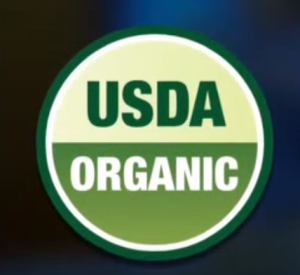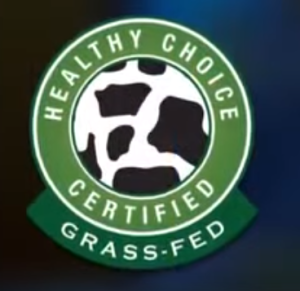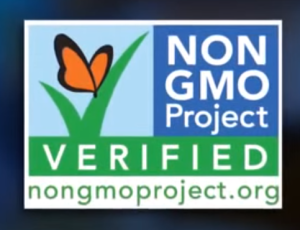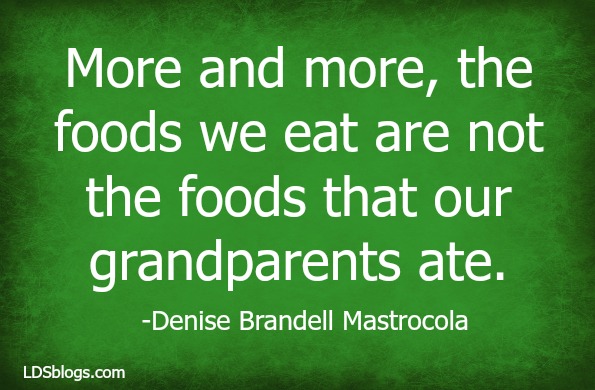**Disclaimer** While the word of wisdom gives us basic guidelines for health, it leaves the interpretation of those guideline up to the individual members. This blog is not intended to replace your medical professional or the divine revelation of the Word of Wisdom, but rather it is practical knowledge that I have accumulated over the years in my own pursuit of a healthier lifestyle which I am passing along in the hopes that it will benefit others.
Labels
More and more, the foods we eat are not the foods that our grandparents ate. While herbicides and pesticides have been in use since the World Wars a more insidious danger is now lurking in our food supply.
Genetically Modified Foods, or GMOs were approved for human consumption in 1994 and were being widely used by 2003. They now represent between 75 to 95% of America’s largest crops. Foods like corn, soybeans, sugar beets, potatoes, papaya, squash, vegetable oils, and farm raised salmon to name a few.
Like so many things, the quest to modify food plants began with a noble goal in mind. Plants produce low levels of natural pesticides to protect themselves when they are under attack by insects or environmental stress, but genetically modified plants would produce larger amounts of this natural defense producing larger crop yields. It would also produce a product with increased levels of protein, which in theory would make it a healthier food.
You can see the appeal of this line of thinking. A third world country where food production and protein deficiencies are a big problem would benefit from foods that could produce more crops with higher protein content, however some pretty big problems have come along with those benefits.
 Genetic modification does allow plants to produce their own natural pesticides to kill insects, but instead of low levels that are only produced when the plant needs protection, GMO plants produce substantially larger amounts of these pesticides all of the time. These plant produced pesticides, called phytoalexins, are known to be carcinogenic, and cause damage in human cells, tissues, and organs. Combine this with the topical pesticides and herbicides applied by farmers and you have a very toxic product indeed.
Genetic modification does allow plants to produce their own natural pesticides to kill insects, but instead of low levels that are only produced when the plant needs protection, GMO plants produce substantially larger amounts of these pesticides all of the time. These plant produced pesticides, called phytoalexins, are known to be carcinogenic, and cause damage in human cells, tissues, and organs. Combine this with the topical pesticides and herbicides applied by farmers and you have a very toxic product indeed.
We have been told that GMOs are safe, but The World Health Organization only requires 90 days of testing to claim that foods are safe. When it comes to our health and food safety however a 90 day study seems wholly inadequate, and independent laboratories which study lab animals for their entire lifespans are finding quite different results.
Laboratories all over the world are finding that GMOs damage the Mitochondria, cell membranes, and chromosomes, causing everything from growth of tumors, to low fertility in lab animals, which presumably means they are likely to cause similar problems in people.
Studies as far back as 2010 were producing some very sobering trends. Here are just a few of the findings from independent labs that point toward the problems caused by feeding lab animals GMO foods. If you’d like to read the article, it’s here.
- Rats fed GMO soy died within three weeks, and mice developed pancreatic and liver problems.
- Cows died mysteriously when fed GMO corn, and many became sterile.
- When mice were fed GMO potatoes, they developed intestinal damage and bleeding stomachs, and sheep died after grazing in GMO cotton fields.
Subsequent testing in more recent years has shown even more disturbing data, such as increased tumor growth in female mice,and hemorrhages in the lining of the stomachs and intestines of male lab rats. This could be significant, especially with the increased incidence of leaky gut syndrome which is a suspected link to neurological disorders.
Going back to our list of foods high in GMOs, 75% of all corn, and 95% of the soybeans grown in the United States are GMOs. This is a little bit scary when you think about how many processed foods contain corn and or soy or other GMO products.
This is just a partial list of items that come from one or more of the top 5 sources of GMOs soy, sugar, corn, canola, and cottonseed.
 Amino acids
Amino acids- Ascorbic acid
- Aspartame (found in NutraSweet, Equal, & Gum)
- Monosodium Glutamate
- Canola Oil
- Corn Starch
- Corn oil
- Cottonseed oil
- Corn syrup
- Textured Vegetable Protein
- Hydrolyzed Vegetable Protein
- High Fructose Corn Syrup
- Sodium Ascorbate
- Maltodextrin
- Modified Corn Starch
- Molasses
- Rapeseed Oil
- Shortening
- Soy Flour
- Soy Isolate
- Soy Lecithin
- Sucrose
- Corn Meal
- Dextrin
- Vegetable Protein
- Sugar from Beets
The fact is that the food markets in this country are flooded with these foods and food additives, from our fresh produce and packaged foods to soy based baby formula, it is everywhere.
So what can the health conscious consumer do to protect themselves and their family from the effects of these genetically altered, laboratory foods?
Avoid GMOs!
 It sounds easy enough, but it isn’t. They are virtually everywhere, and the laws do very little to protect consumers. Reading labels helps, but the laws controlling what a company can say on its label leaves a lot of room for deceptive labeling practices and consumers are not getting what they think they are paying for.
It sounds easy enough, but it isn’t. They are virtually everywhere, and the laws do very little to protect consumers. Reading labels helps, but the laws controlling what a company can say on its label leaves a lot of room for deceptive labeling practices and consumers are not getting what they think they are paying for.
Some of these deceptive labels include but are not limited to:
All Natural, Natural, Pure, and GMO Free.
Your best bets are to look for labels that say
USDA Organic, or Non GMO Project.
The Non GMO Project is an independent nonprofit that uses the most advanced scientific testing to detect GMO contamination in foods. Foods with this label are 99% safe from GMOs.
When purchasing meats look for
USDA Organic, Grass Fed, or Wild Caught Seafood
Sadly farm animals are frequently fed foods that are GMOs, so don’t be fooled by misleading labels like Free Range, Cage Free, or Naturally Raised. If the animal was fed GMOs, then it will reach you when you eat that meat or dairy product.
You might think that a label that says GMO Free would be GMO free, but there is nothing in our food safety laws requiring it to be as the label says it is, and the companies that produce these products are fighting to keep it that way.
Fresh produce is a little bit easier to decode, but you must know how to identify what you want from the rest of what is out there.
Look at the little stickers or labels that you find on your fruits and vegetables. That number is more than just a code to tell the checkout clerk how much to charge you for that item, it also identifies how that item was grown.
If the number begins with a (3) or a (4) then that product was grown traditionally. It will have been sprayed with herbicides and pesticides, and may or may not be a GMO.
If the number begins with a (9) that means it was grown organically and will not be a GMO, nor will it have been sprayed with herbicides and pesticides.
There is another sticker number which begins with an (8). It identifies products that are GMO products, but it is voluntary and the odds are you will not find it very often if at all, as companies do not want to be identified with the GMO stigma.
Packaged foods and drinks are GMO laden unless appropriately labeled otherwise. For cereals look for non GMO grains such as oats or wheat with non GMO sweeteners like cane sugar and honey.
When buying snack foods it is worth the money to shop in the organics isle of your store as nearly all snack foods are made with ingredients that will be GMOs unless they are organic.

To read more of Denise’s articles, click here.
Make your own salad dressings from olive oil and various vinegars, as non-organic salad dressings are nearly always made from soy or other GMO omega 6 cooking oils.
While other countries around the world are recognizing, and in many cases banning GMOs from their food supply, the United States has been rather slow in catching up.
So while we wait for our voices to be heard we must be proactive, educate those who are willing to listen, and do whatever we can to protect ourselves and our families.
Article sources include:
- http://www.nongmoproject.org/wp-content/uploads/2015/03/GMO-Myths-and-Truths-edition2.pdf
- GMO Corn Makes Rats Infertile, New Study Finds
- http://www.alternet.org/food/monsantos-gmo-feed-creates-horrific-physical-ailments-animals
- June 2010 article: Genetically Modified Food: Is the Food Industry Serving Up Poison? by board certified neurosurgeon, and health practitioner Dr. Russell Blaylock
- November 2012 article: “Frankenfoods” and Pesticides: Destroyers of Health by board certified neurosurgeon, and health practitioner Dr. Russell Blaylock
About Denise Mastrocola
Denise is a Michigander turned Pennsylvanian, who has been writing stories since Elementary School. Denise won an award at the annual Lansing Youth Talent Show, when she was in 10th grade, for a short story entitled Procrastination is Fatal, but didn’t decide on writing as a career until she was 28 years old. While homeschooling her older children she spent 4 years working through a course from The Institute of Children’s Literature.
Through the years Denise’s children have had a variety of health issues, many of which have been linked to various sensitives; having spent more than 20 years researching and trying different things Denise has a boots on the ground view on healthier living.
Denise currently writes for 2 blogs and has several books in different stages of completion. She is planning to break ground in e publishing, and hopes to have her first Historical Fantasy book which is set during the renaissance, “Lisa, My Lisa?” ready by the first of the year.
Twitter •






